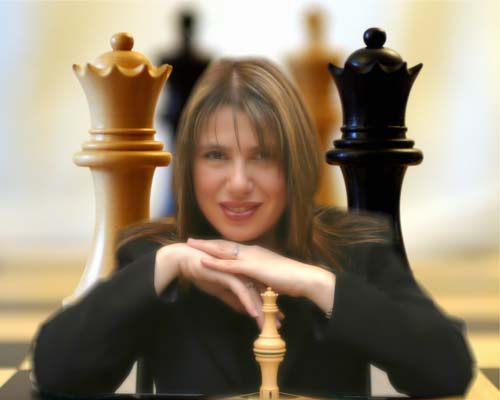
Susan Polgar is the world’s first female chess grandmaster.
In fact, before Susan’s ‘sudden’ arrival on the chess scene, people believed that the female brain was somehow inferior to the male brain.
Especially when playing chess.
And then Susan kinda burst that sad bubble of male superiority.
But we’re not here to talk about male or female brains.
We’re here to talk about measurement.
Because Susan is such a genius, the kind scientist folk decided to look inside her brain.
And they found something quite startling.
But to understand how startling it is, we have to understand how your brain and mine works, in the first place.
Here’s how our brains work
When we see a person, or meet a person, we remember their faces.
We do so, because our brain stores this information in a place called the ‘fusiform gyrus.’
So though we may not remember the person’s name, we sure as heck remember their faces.
Susan remembers faces as well
And she too stores these faces in the ‘fusiform gyrus.’
But she stores something else there too.
She stores thousands of chess games in the ‘fusiform gyrus’
So to her brain, the entire chess game, with all its moves, is like a face of a person.
Which means she can recall thousands of games, just like you and I can recognise a face.
But was Susan born with this unusual brain?
She certainly doesn’t think so. She believes that her brain needed to store the information. And since there was so much information to store, it just found a store room that was handy. That storeroom happened to be the ‘fusiform gyrus.’
Her brain is no doubt different from ours
And so was Albert Einstein’s brain. The legend goes that Einstein’s brain was far more developed than most other brains.
Now there’s absolutely no debate that the brains of geniuses are different from our brains.
But did they start out that way?
Were they born with a superior brain?
Or did the sheer discipline of learning increase their brain capacity and function?
No one measured baby Einstein’s brain.
Or baby Susan’s brain.
Or the brain of millions of babies who turn out to be geniuses.
But here’s what I’m guessing.
That there are a hundred billion neurons in your brain (remember the fairy lights?).
Even if one brain is bigger than another. Or different from another, it doesn’t count for much.
Having a hundred billion neurons or a hundred and twenty billion neurons counts for little—if they don’t light up.
The lighting up of your neurons is what sets your brain aglow.
It’s what creates the intelligence.
We are so focused on believing that some people are more talented than us.
We are so focused on how un-creative we are.
That we let most of those billions of neurons lie dormant.
Unlit.
Like a Christmas tree with billions of bulbs and most of the bulbs without any power.
If you want to become a genius, it’s relatively simple.
You’ve got about a hundred billion neurons in your head.
How many are you going to light up?
Light up many of those neurons and some day soon they’ll put you in a lab.
And measure your brain activity.
And call you a born-genius. 😉
